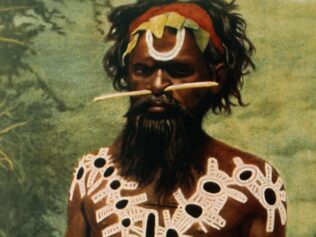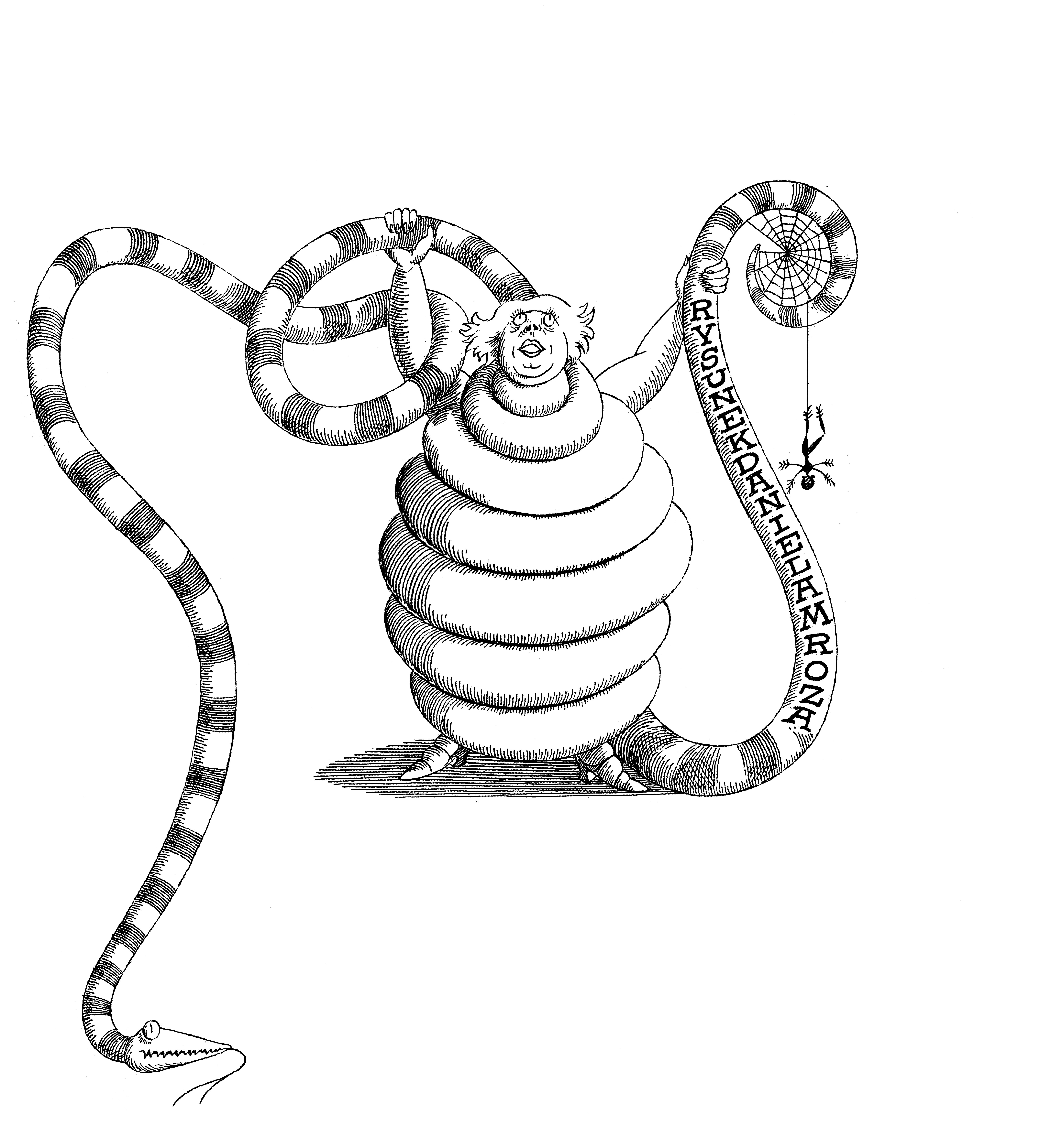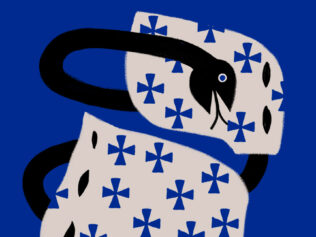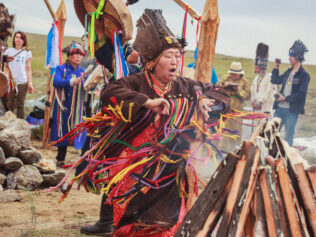
We usually imagine Druids – the Celtic priests – as old men in white robes, wise and gentle with a golden sickle raised to reach the mistletoe. Yet it appears that, even though they indeed possessed great knowledge and were highly respected, they tended to be violent – and did not necessarily have to be men.
In order to show the Druids’ barbaric habits, the Roman poet Lucan wrote that they did not officiate their rites in temples, but deep in impenetrable groves. The Gauls’ sacred groves scared not only ordinary people, but also the Celtic priests – Druids entered them fearing they might meet “the lord of this grove.”
The Gaulish word for temple is nemeton, but scholars have shown that originally it meant ‘sacred grove’. Yet another term to be found in ancient writings is drunemeton, most likely meaning ‘Druids’ sacred grove’ or ‘sacred oakwood’. It is only under the influence of Greek and Roman cultures that the Gauls started building temples. They did not need them earlier – their sacred places were groves, as well as hills, caves, streams and rivers. Their traces have survived in French place names, such as Arlempdes (formerly called Arnemetum, meaning ‘next to the sacred grove’), Nanterre (formerly called Nemetodurum, nemeton + duron – the latter meaning ‘strong’, ‘resilient’) and Vernantes (uer-nemeton, meaning ‘the big grove’).
Trees in blood
While the Slavs’ sacred groves fell victim to Christian missionaries, the Celts’ sacred spaces were destroyed by the Romans. It seems that there were several reasons, one of them being that the rituals taking place in the groves were extremely cruel.
Lucan described them with a sense of disgust. According to the poet, Druids would splash the trees with the blood of the people who were sacrificed there. According to Julius Caesar (whom I am going to refer to often, as his Gallic Wars is a priceless source of information on ancient Druidism), Druids made sacrifices in the name of those who wanted to earn the favour of the immortal beings. Among the most often sacrificed were war prisoners and criminals. Some scholars argue that it was a practical solution: both needed to be fed and guarded, both actions more easily done in a well-organized state, but quite a nuisance in small, tribal communities. According to Caesar, one of the Gallic tribes would build a big wicker cage, shaped like a human. Then, the people meant to be sacrificed were locked inside, a fire was lit under it, and the prisoners died in the flames. On the other hand, Diodorus of Sicily, an ancient Greek historian, claims that the prisoners were also killed with a sword or an arrow. Then, the Druids would divinate, either from the position of the body or the way the blood flowed from it. Allegedly, another method of killing was impaling (each deity preferred a different method). Diodorus adds that Gauls would never make such sacrifices without Druids – “philosophers” who “know the nature of the gods” and “speak the same tongue as the gods.”
Certainly, if we limit ourselves to written resources, it is difficult to know with any certainty whether human sacrifices were really made. Roman writing from the time of the conquest may be treated as slander (had not Christians for ages accused Jews of killing babies and drinking their blood?) or propaganda. The Romans were in the process of conquering the Gauls, so they might have shown them in a bad light in order to justify their ‘civilizing’ aggression.
On the other hand, human sacrifices are not particularly rare in the history of religion. Recent archaeological discoveries tell us quite a lot on the subject. It turns out that the Romans might have been telling the truth.
In a cave close to the English village of Alveston, the bones of 150 people were found. It would be hard to call discovering that many remains in one place an accident; moreover, according to archaeologists, all the people found there died at approximately the same time. Also, some of them died in a similar way: from a sudden, brutal blow to the head with a sharp instrument. If it was an ‘ordinary execution’, why was it done in a cave so difficult to access? Radiocarbon dating has shown that the remains come from the times of the Roman conquest. Perhaps the religious elite in those days, desperate in the face of the overwhelming power of the Roman military, reached for the ultimate means: propitiating the supernatural with the highest possible sacrifice: human life. Incidentally, the alleged hecatomb was not limited to humans. The bones of dogs and cattle were also found in the cave, which makes it even more likely that it was the site of a ritual sacrifice.
The pretext for new speculations on Druidism was the discovery of the Lindow Man, a body found in 1984 in a peat bog near the English town of Wilmslow. The man was also killed during the Roman conquest, at a similar time as the victims were found in the Alveston cave. Miranda Aldhouse-Green, an archaeologist and historian, leans towards the hypothesis that he was an aristocrat, a member of the elite, the evidence of which is, among other things, his well-groomed nails and the absence of any bodily injuries, so common with warriors. The body has survived in perfect condition. It was even possible to tell what the Lindow Man ate before he died. It was bread, but also – and more importantly – some mistletoe pollen was found in his stomach. It is possible that he, too, was sacrificed to the deities so that they would help the Gauls defeat the Roman army. There are also theories according to which the dead man was himself a Druid.
Even if Druids really made human sacrifices, it would be hard not to appreciate their rich and complex culture. In any case, many ancient authors themselves praise Druids, perceiving them as sages. In his Lives and Opinions of Eminent Philosophers, Diogenes Laertius discusses the thesis according to which Celtic priests were to be the precursors of philosophy (which he, of course, rejects. In his opinion, philosophy, as well as “the human species as such” originates in Greece – but it is important that he considers it at all). Even though a bloody sacrifice like this provokes our terror and revulsion, these practices seem to be closely linked to Celtic theology. Julius Caesar wrote that Druids’ main function was making sacrifices, but calling them barbarians today would be a great mistake.
Meeting under the mistletoe
Perhaps, as in the history of other Indo-European peoples, the cruel tradition, both in the case of people and animals, is founded on the cosmogonic myth of an original sacrifice of a deity, from whose body the world was made. The ritual, then, would be a symbolic repetition of the act of cosmic creation. It throws some light on the claims of Druids who credited themselves for “the creation of heaven, earth, sea, sun and moon.”
Bruce Lincoln, a historian of religion, believes the sacrifices are also linked to another activity constantly connected with Druids: healing. According to the researcher’s neat formula, healing is the reverse of the act of sacrifice. A priest heals the world by sacrificing a human body. On another occasion, the priest heals the body with what they find in the world. If we wish to consider this perspective, we should turn to an Irish manuscript from the 13th to 14th centuries CE, in the collection of the British Library. According to the manuscript, the first part of Adam was made of the earth, the second from the sea, the third from the sun, the fourth from the clouds, the fifth from the wind, the sixth from the rocks, and the seventh from the Holy Ghost. Then the text ascribes a converse relationship to the respective aspects of the cosmos: the earth is the human body, the sea corresponds to human blood, the sun is the face and countenance, the clouds are our thoughts, the wind is the breath, the stones are our bones, and the Holy Spirit is the soul. This is a case of the theory of cosmic correspondences, popular in the history of magic and esotericism. According to it, with the body humans can affect the elements; with the elements, they can influence bodies.
In his Natural History, Pliny the Elder talks about the extraordinary respect Druids had for mistletoe. They used it both to heal people and to enhance the sexual potency of cattle. Allegedly, nothing was holier to Druids than mistletoe and the tree on which it grows (especially oak). They perceived it as a tree that had nothing that was not sent by the gods. Cutting mistletoe was a ceremony. It happened on a particular day, when the moon was ‘full of energy’ (hadn’t run half its course). A priest in white robes climbed the tree and meticulously cut the mistletoe with a golden sickle, before laying it on white linen.
In her study Celtowie [The Celts], Bożena Gierek observes that the pharmacologically-active substance found in mistletoe is used today to cure hypertension and nervous disorders. Which in turn leads us to suppose that Druids also dealt with… psychiatry. Mediaeval literature praising the miracles of the Brocéliande Forest, allegedly to be found somewhere on the British Isles, mentions a hospital with a telling name: Crazy (Stupid) Thought (Folle-Pensée). The available sources let us conclude that Druids knew how to use herbs and plants for medicinal purposes. We suppose that they used poppy seeds and mushrooms in their rituals, to produce visions or anaesthetize. Archaeological research demonstrates that Druids had some knowledge of surgery. Tools used in skull trepanation have been discovered in Burgundy, while in England and France archaeologists found bones healed after fractures. In Western Gaul, several dozen sites have been discovered that could be called hospitals or sanatoriums. They were usually situated close to healing springs.
The ones who knew more
There are numerous theories about the etymology of the word ‘Druid’. According to the tradition started by Pliny, the word derives from the Indo-European word meaning tree, oak (e.g. the old Celtic dervos, the Greek drys). Druids were ‘forest people’. Another, more contemporary interpretation points to the Indo-European vid (‘to know’), uid (‘to acquire knowledge’, ‘to get to know’), while dru enhances these meanings. In this reading, a Druid is ‘the one who knows the most’.
Some argue that Druidism can be inscribed in the Indo-European scheme of the priestly caste – like Brahmins in India or magi in Persia. Yet this is not a fully accurate description. There are strong claims that Druids’ power, even though it stemmed from their close contact with sacrum, also included the spheres of politics and law – to such an extent that Druids held a central position in Celtic society. As we might suspect, the most power was held by the king of Druids (or the Archdruid), in ancient sources also known as the first magus – the leader of the confraternity that had an inter-tribal character (in her book Religie Celtów [Religions of the Celts], Janina Rosen-Przeworska claims that the structure of this organization was modelled on other secret clubs extant in Greece or Asia Minor).
The position of women in Celtic society was strong – as evidenced by the fact that they could become Druids. Greek and Roman writers were astounded by this. Tacitus even wrote down the names of two women Druids: Veleda and Albruine. Strabo wrote about women dressed in white, with bronze belts, barefoot, with a sword in their hands. They too knew the future, healed, and ruled over the elements. According to Janina Rosen-Przeworska, women Druids survived in France until as late as the 17th century. Archaeological studies also suggest that women Druids were present in Poland. In Wszedzień, a village close to Mogilno, a bronze belt buckle decorated with the image of a horse’s head was discovered. According to the researchers, belts like this one were only worn by Celtic priestesses.
Thanks to divination and astrological knowledge, Druids had a decisive influence on important decisions (e.g. whether to take part in a battle). Druids’ huge political power also resulted from their right to impose geasa (i.e. prohibitions and obligations), even on rulers. Breaking geasa, which were taboos of sorts, could lead to supernatural vengeance. Some ancient sources – as well as later Irish ones – claim that kings surrounded themselves with Druids, who were their advisors and “had the right to speak before the king,” which in fact means that they actually ruled. We also know of kings who were Druids themselves. All this explains why the Romans wanted so much to destroy Celtic priests, seeing in their activities – probably rightly so – the main obstacle in conquering the Gauls.
It is interesting how much stress Druids placed on ethics; ancient authors admire them in this respect. Allegedly, the mere appearance of a Druid on the battlefield could lead to the end of the conflict. According to Diogenes Laertius, the Druids’ teaching can be summarized in the formula: “Practise courage, abstain from wrongdoing.”
Word and writing
We should distinguish between Druids and their lesser-known relatives, vates (on the British Isles, known as filí). It is difficult for us today to determine to which category a particular character belonged. Filí specialized in the art of divination and had knowledge of poetry, but could not perform bloody sacrifices – perhaps this is what made their cooperation with Christians possible. Supposedly, the first Irish monks, the creators of early Celtic literature, recruited from among filí.
Greek and Roman authors differentiate between Druids and bards. In his book The Druids, Peter B. Ellis observes that such divisions are absent from Celtic sources. Celtic poetry was connected not only to music (it was sung, not recited), but also to magic. Poetic inspiration was considered supernatural. It suffices to quote the name of one of the Irish magical rituals: ‘the cracking open of a poem’.
Bards known from later literature often had some Druidic traits. The Welsh Myrddin, the prototype of Merlin, was a poet and an orator. The Scottish prophet Lailoken could divine the future from the behaviour of birds; he was called “the wild man of the woods.”
Why was the Druids’ wisdom lost forever? The main reason is Druids’ reluctance to commit their teachings to writing. Their knowledge, transmitted by word of mouth in remote corners of woods or in caves, survived only in fragments. As Julius Caesar writes, Druids rejected writing for two reasons: first of all, they did not want the knowledge to fall into the wrong hands; second, they believed that writing weakens memory. The secret Druidic studies lasted 20 years (according to Caesar) and included such various disciplines as the law, astronomy, herbalism and mythology, surgery and magic, geography and poetry composition. Allegedly, the student had to memorize 20,000 verses – anyone who could surpass this number was more deeply initiated.
The secret character of Celtic priests’ teaching manifested itself in yet another way: according to ancient authors, Druids taught in riddles, as well as organized contests. Tochmarc Ailbe, a 9th century Gaelic work, contains a description of a riddle duel in which Saint Ailbe took part. Scholars point to traces of the Druidic tradition. Here are some examples from the mediaeval text:
What is sweeter than mead?—Intimate conversation.
What is blacker than the raven?—Death.
What is whiter than snow?—Truth.
What is swifter than the wind?—Thought.
What is sharper than the sword?—Understanding.
What is lighter than a spark?—The mind of a woman between two men.
(translated by Lawrence Eson)
Even though Druids did not write their teachings down, they invented a type of script used for magical purposes. The script, known as ogham, was to supplant the earlier “secret speech of the fingers.” Ogham was used in funeral rituals, to communicate with the netherworld, or even to resurrect the dead. With its help, one could also cause illness and death.
Caesar writes that in their sacred places, Druids regularly organized discussion and argumentation competitions. Some of these meetings happened in a language that only the Druids knew. An event like this was always held after the death of the Druids’ king – the new one was elected via voting or a sacred duel.
Wanderers after death
Ancient authors emphasize the fact that Druids’ main lesson was about metempsychosis, or the transmigration of souls. Some Greek writers naively (and ethnocentrically) claimed that Druids borrowed these beliefs from Pythagoreans – this is how they explained the similarities between the two doctrines. This optimistic belief in eternal life is connected to a lack of fear of death. Roman authors – in particular, the practically-minded Caesar – maintained that it was the source of the Gauls’ bravery in combat. Pomponius Mela takes a more sensational approach: when a Gaul was killed, his friends happily jumped onto the funeral pyre, hoping that soon they would meet their close one in the other world or in the next incarnation. Within this world view, would the sacrifice of a person’s life be seen as an irreversible loss? Perhaps this unshaken certainty of the existence of life after death can help us understand the unsettling words of Pliny the Elder, according to whom killing a human was for the Celts the most religious thing under the sun.
Druids knew how to visit the Land of the Dead; appearing there was actually a condition of reaching the next level of initiation (could poppy seeds and mushrooms have been helpful in this journey?). Strictly speaking, the initiation consisted in consuming a berry that grew in the netherworld on the Rowan of Knowledge and Inspiration (moreover, the filí’s wands were associated with rowan tree branches; they had little bells that were supposed to imitate the sounds of the netherworld). The Tree of Knowledge grew by the stream and the fruit falling into the water – as Jerzy Gąssowski writes in his Mitologia Celtów [The Mythology of the Celts] – were eaten by the Trout of Inspiration. The sacred knowledge could be obtained by a person who either ate the trout or drank the water. If the trout managed to escape to a different river and was fished out, it granted the catcher extraordinary wisdom. Gąssowski stresses the fact that the voyage to “the land of shadows” drew the Druid closer to the deceased and the gods, which gave the Druid an exceptional degree of authority among the living.
As I mentioned earlier, the Romans tried to eradicate the entire Druidic caste. An important part of the Roman conquest was the annihilation of the religious centre on the isle of Anglesey in 61 CE. At first, Roman soldiers were afraid of the Druids and Druidesses casting spells on them, but they managed to overcome that fear: they murdered everyone they met on the island, destroyed oak groves and all places of worship. In later centuries, when the power of the Roman Empire weakened, Druidism experienced a momentary revival, after which it suffered persecution from the Church, which perceived Druids as guardians of paganism.
Numerous legends tell of the struggles between Druids and Christian saints. The saints, however, showed Druidic traits themselves. The patron saint and apostle of Ireland, Saint Patrick, defeated 11 white-robed priests who wanted to kill him, but he did it using magic: it sufficed for him to raise his left arm and utter a spell. Moreover, Saint Patrick had power over nature and the weather – he brought rain or drought, chased away snakes and saved people from disasters. An intriguing example of the old and new religious orders blending is Saint Columba’s prayer, which starts with the words: “My druid is Christ.”









